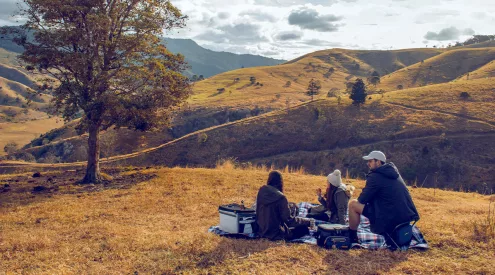Building an owl house isn’t only a fun family weekend project; it’s also an eco-friendly way to control vermin and snakes while contributing to the conservation of these beautiful raptors.
Why build an owl house?
Owls are under threat from human encroachment and poisoning, especially in urban areas. Many who control pests using poisons aren’t aware of the knock-on effect of the poisons on the ecosystem or that it results in the death of raptors, which feed on poisoned vermin corpses.
There are products on the market that don’t impact the food chain in this way, but we decided to take another tack – building an owl house. Owls are an excellent eco- friendly pest-control method and will keep rats and snakes in check. If one or two people in each neighbourhood were to erect a haven for them, these birds of prey could regain their rightful place in the food chain. In addition to the potential eco-benefits, constructing and placing an owl house is a fantastic way to get your kids involved in a small DIY project with a long-term conservation lesson attached.
While it’s relatively easy to design and build an owl house, we opted for a kit from owlshouse.yolasite.com, based in Somerset West. The Owl’s House team supports raptor conservation projects and encourages donations to AgriOwl whose specific focus is pest control on farms (the link to AgriOwl can be found on owlshouse.yolasite.com).
Having a kit delivered to our doorstep meant my three year old could be involved in the project right from the word go – she hates the sound of my electric saws.

Which owl box?
Owl’s House make two versions, one for barn owls and the other suited to the spotted eagle-owl, both of which occur across South Africa. We chose an eagle-owl box, which has a bigger entrance, because they’re prevalent around our home (and have the best call – IMO).
The kit
The kit (R450, excluding delivery) arrived in a flatpack, complete with all the panels, screws and instructions. All we needed to add was a bit of wood glue, some linseed oil, a paintbrush and elbow grease or, if you have one, a cordless drill.

Simple assembly
Putting the owl house together is a simple, join-the-dots exercise; following the clear, photo-illustrated instructions we had ours built in well under an hour. After leaving the glue to dry overnight, we painted the whole box in two coats of linseed oil to protect the wood from the elements.
The folks at Owl’s House recommend painting the inside of the box with a harmless (to owls) 1:10 mixture of Jeyes Fluid and water to deter bees from nesting in it. They also advise lining the completed owl house with untreated sawdust or
pine needles, both of which won’t rot, for owl bedding.
Placing it
Finding a suitable position for the box is perhaps the most important part of the whole exercise. Before going ahead, check you have a position four to five metres above the ground with a clear flight path to the entrance. It’s also important to ensure the box is placed out of direct sunlight and that the entrance is out of the prevailing wind (north facing is best, if possible). If you don’t have a suitable tree, placing the box on the side of the house is an option, but try to find a spot where there’s limited human and vehicle traffic.
Our box hadn’t been up very long, so we don’t have a tenant yet, but I’m sure the day one arrives my little girl, who now pores over owls in bird books while keeping watch, will let the neighbourhood know.





















